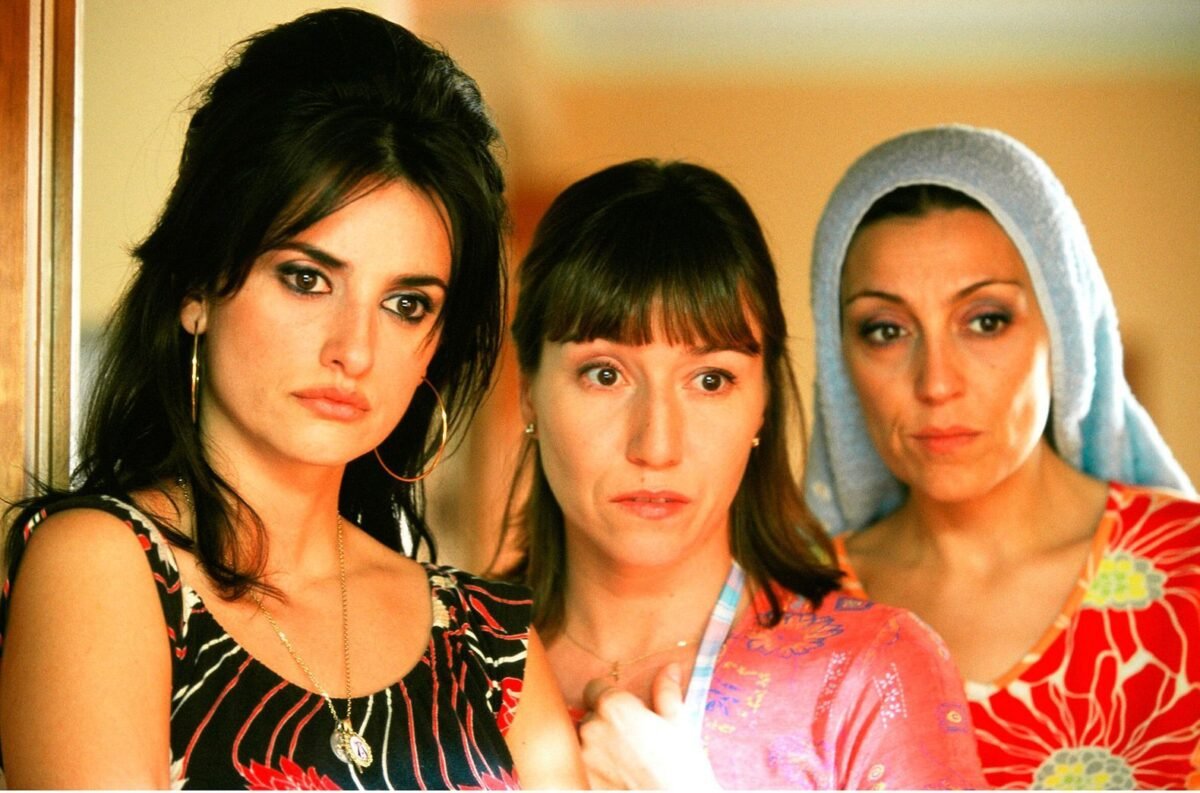2023 Tarkovsky Prize 1st Place: Hannah Wissotzky
VIENDO ROJA—On VOLVER
by Hannah Wissotzky
I entered this world screaming, lungs strained, tiny fists punching the air, legs struggling for purchase. That was the last time I was afforded such an excess of emotion. I was born a woman, mystified as men were afforded the leeway of boys long after the title had expired. My education beyond that of common Arithmetic and English encouraged silence and fragility. I made myself as small as possible in an effort to assuage my guilt over existing in a world that seemingly didn’t want me. Maybe they were right because deep within me is madness; if I were to ‘lose control’ of my temper, my appetite, my sexuality, my feelings, my ambitions, my secrets, my fantasies, my mind; the world would have a force to reckon with, something uncontrollable, god forbid.
That is "womanhood," a balancing act between expectation and reality, a battle orchestrated to distract from the war. The movie Volver by Pedro Almodóvar is an ode to that. It focuses on a group of women who tackle sexual abuse, death, revenge, parental abandonment, superstition, and trauma, delving into the female experience in all of its bloody glory. Crimson, a color prevalent in women's lives discovered as early as nine, smeared across crisp sheets or white lace underwear, stark in contrast. In this movie, red is spilled, worn, splattered, cleaned, and celebrated. It is seen in almost every scene, from the worn flowery tea set, checkered floor tiles, lined edge of an apron, block-type text in the opening credits to the bright eyelet patterned knit sweater worn. It is more than a dominant wavelength of approximately 625–740 nanometres. It reflects the range of emotions and abuses depicted in this story.
Raimunda, the main character, can be seen cleaning bright ruby blood off a knife in a poignant and awkwardly long clip contrasted with a parallel scene cleaning the same knife of food remnants sans blood later in the movie. This moment is crucial as it represents Raimunda’s feminine rage, contained, methodic, measured, equivalent to the strokes of a sponge against the edge of a knife, her wrongdoing tucked casually in the freezer, her boyfriend Paco’s dead body. Rather than crying over him, Raimunda is composed, actively working to conceal his death. She wipes up his blood and throws away the stained paper towels in the trash bin. Thrilling, suspenseful music provides the backdrop, granting a sense of foreboding, traditional in horror films. Referencing Spanish culture, red depicts, either the honoring or rejection/supression of death. Raimundas response to Paco’s death is grossly dissimilar to the first scene, in which we see a long pan of women cleaning and sweeping in a cemetery to honor those who have passed; cheery Spanish music playing in the background as woman place strikingly red marigolds on the graves.
Death decorates the hands of the woman in Volver. Retribution is the culprit, the ending a happy one, its nonsensicalness as stark as the red decorating the story. The fear of being painted an angry woman, a label akin to insanity in society, keeps the freedom these women possess entrapped in the pixels of the screen. Yet I refuse to believe the right to raise my voice and own my anger is asking too much; there isn’t even a body hidden in my freezer, allegedly.

